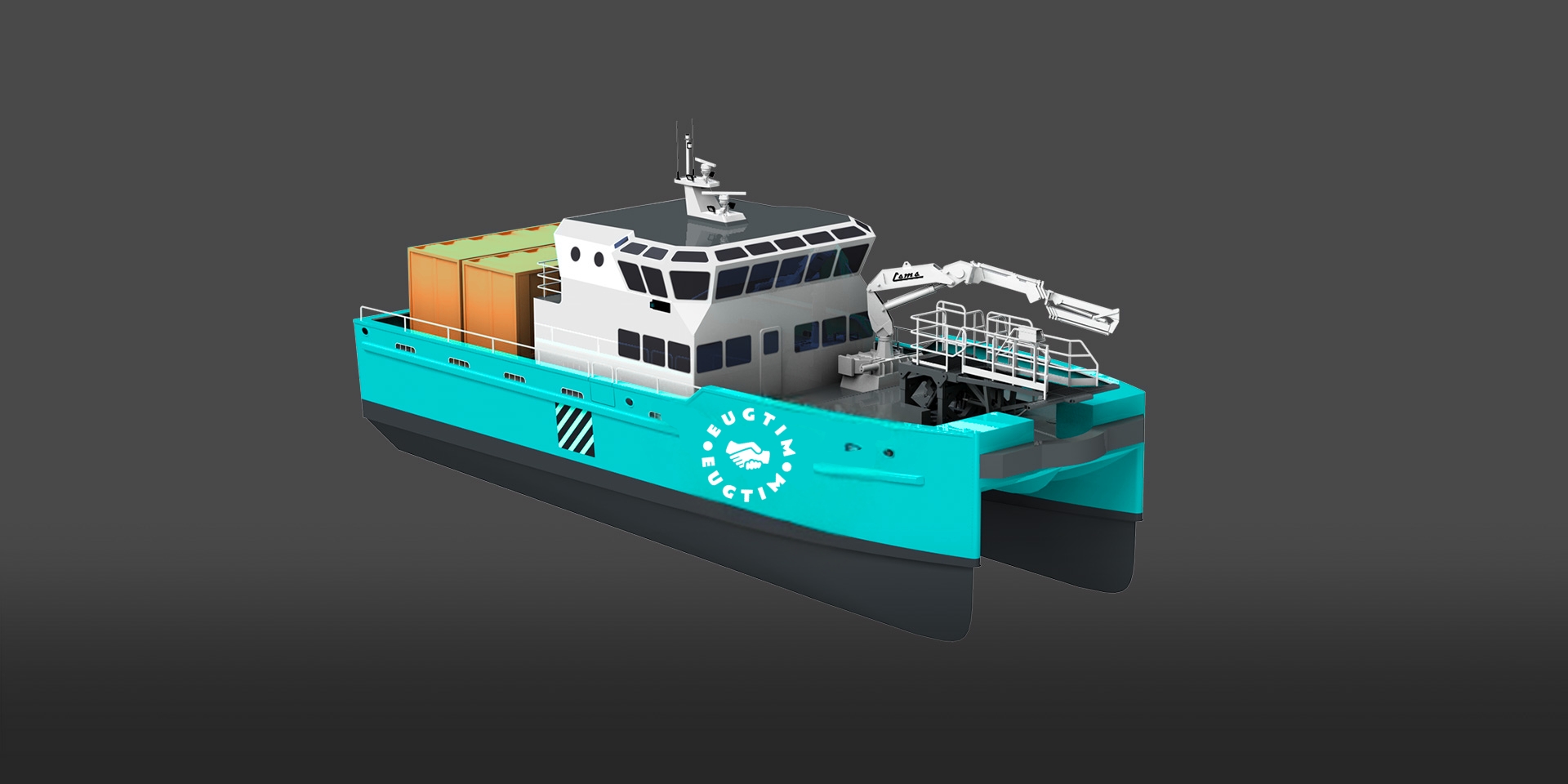
* THE VESSELS SHOWN HERE ARE EXEMPLARY MODELS ONLY.
Crew transfer vessels (CTVs) are ships mainly used to move offshore workers and small cargo. The front of the ship has a bumper system (fender) that helps it safely approach wind turbines or accommodation vessels, making it easier for people to board. Most CTVs today are built to carry around 12 people, but larger ones can carry 24 or more. Besides the traditional single-hull design, some are built as catamarans, trimarans, or SWATHs (Small Waterplane Area Twin Hulls). Depending on the design, they can travel at speeds between 20 and 30 knots (about 50 km/h). They often have small to medium cranes on deck and systems to refuel wind turbines, making them very useful. Usually, they are made from aluminum to keep them light and reduce impact loads when mooring at turbines.